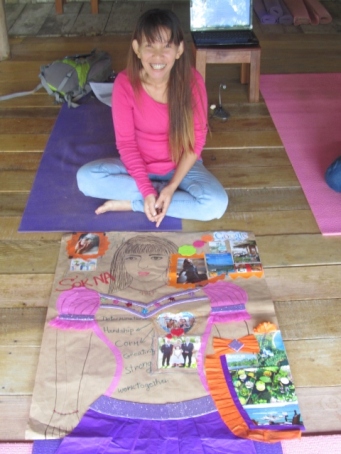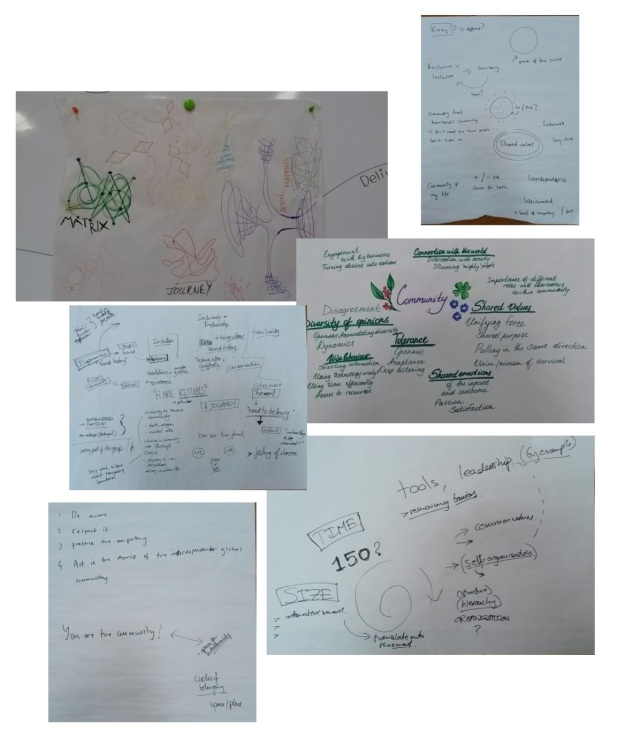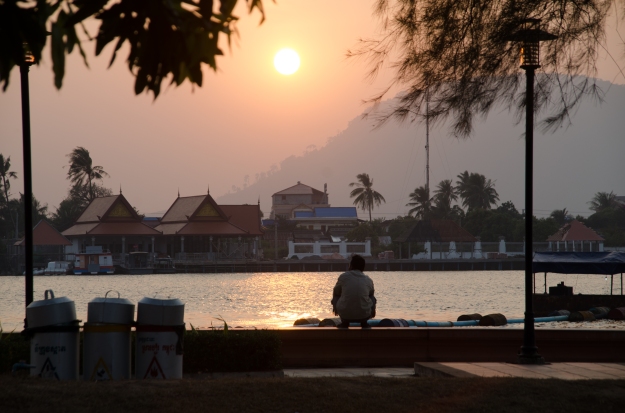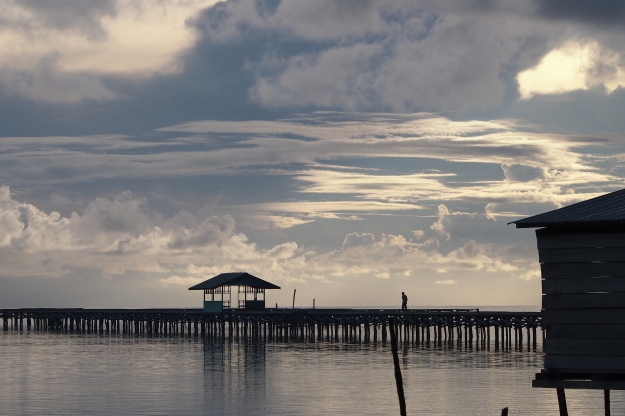Over the past four months I have been facilitating progressive AI meetings at Banteay Srey Women’s Spa with the staff. Now the process has finished, it’s time to look back on the whole of the process, on the challenges and learnings. In this post I will focus on the design of the process.
Getting started
Upfront I had an interview with the founder and owner of Banteay Srey Spa about what results the process should deliver for her to be content: she would like her staff to be involved in realising in the real goals of Banteay Srey Spa and the staff to be more connected. Also the process should help build the staff’s capacity.
Also more concrete results were formulated:
- A structure for (ongoing) involvement and engagement of the staff
- A plan in place that everyone is clear on and ready to be activated
- Tools for the personal development of the staff
Based on this interview the change agenda[1] was formulated as ‘All on board the Banteay Srey Learning Journey’. The meetings were held three times a week lasting for an hour to an hour and a half. It was not possible to work with an advisory team. Most of the decisions on the design of the meetings were made by myself, involving the owner of the spa whenever necessary.
Preliminary phase
In the first meetings I went over a few principles and concepts with the group through a number of exercises. We talked about how we all have a different perspective and therefor different stories and that we can choose what we focus on how we look and think about things. They experienced the difference to have a conversation with someone using ‘yes, but…’ and ‘no, but…’ and we used a re-framing exercise to reformulate a problem into something we want to create. After that we started with preliminary interviews through which the members of the staff got to know each other more in depth and were able to strengthen their relationships. They shared stories about values, experiences, what gives energy to and what brings out the best in themselves and their colleagues. From all the stories the group derived topics that were put on one big list. After sharing all the stories and formulating all the topics, I gave everyone five colored post-it’s to choose their most important topics by sticking one or more post-it’s on one topic. They could divide the post-it’s however they wanted. The topic ‘teamwork’ was by far the most chosen topic. This topic was transformed into an affirmative topic[2] by asking them to come up with a title for a short text about teamwork based on input from the stories and the other chosen topics. After a discussion about all the titles that everyone came up with, the group decided on the title: ‘Teamwork: one mind, one goal, one heart’.
Personal profiles
Before we continued discovering about what makes great teamwork, I asked them all to make a visual and creative personal profiles that would show the rest who they are: what they value, what their hopes and dreams are for the future, what they struggle with etc. The results were beautiful and inspirational.

In comparison, the stories that came up during the preliminary interview seemed less abstract and deep, more linked to everyday experiences and activities than the stories from the personal profiles. Through the creative and expressive approach of the profiles they seemed to be able to tap into a deeper level of their personality and capture this in their creation. I don’t know if this approach just made it easier to overcome the language barrier, as they might have been less limited by vocabulary and concepts. Or does a creative and imaginative way really allow people to dig deeper into themselves? If anyone has knowledge on this or reading tips, I would love to hear about them!
Discovery
After sharing the profiles and stories with each other, we started with an appreciative interview on teamwork. My first draft was an extensive appreciative interview, including questions going into the dream for the future dream and how to get there. I realised however, after the experience with the preliminary interview, that I wouldn’t be able to hold on to the energy that was build up during the personal profiles if we did a full-size interview. Also I thought it would be more effective if the phases Dream, Design and Destiny would involve more creative and visual exercises than (just) answering interview questions. So I limited the interview to questions about the high point experiences about teamwork, learning and growing and becoming your best. Afterwards I realised that I probably should have focused only on teamwork. That would have allowed them to focus all the energy on the main topic Teamwork. And I found that usually the same examples or experiences were used to answer the different so the amount of new data was limited.
To derive the positive core from the stories, I used a format containing a limited number of possible success factors that I thought would be applicable to their situation and easy for them to understand. Every time we shared (part of) a story I asked everyone if they could identify a success factor. To have a visual of all the collected success factors, we put all the data in an image of a lotus flower (part of the spa’s logo). In hind sight I should maybe have let the team come up with a metaphor themselves and should have allowed more time to make it more visual, creative and a real expression of the team.
Dream
I was struggling how to approach the Dream phase after the success and all the energy that was released with the personal profiles and, in my view, lesser success of the interview. Should I start with a creative exercise visualizing the desired future? or ask them to create an image of the future in words. I chose to start with asking them to draw a picture to show the others what the team looks like when it is working with one mind, one goal, one heart. The picture had to show all the people involved in the spa in it: the owner/ director, staff, trainees and volunteers. The challenge with this exercise was ensuring everyone drawing their own personal view in their personal way. What happened looked a lot like people copying ideas of what to draw. To tackle this as much as possible I asked the people who seemed to be copying, to share their stories first. What surprised me (in a positive way) was that they did come up with a story to go with the drawing. This left me a bit puzzled: is copying a sign of lack of inspiration or self-confidence? Or is this just their way of doing things as a more collective culture? So I’m not sure how and if I should try and prevent copying next time.
After this exercise we went over some questions with the group as a whole about how a team with ‘one mind, one goal, one heart’ should behave (what behaviour is shown), what the goals of the team would be, what values are important to them. Also we talked about how the team and everyone individually had contributed to the future success.
The last part of the Dream phase would have been a group exercise in which the team would have had to bring the dream to life in an active and creative way e.g. a song, a dance, a yoga exercise, a poem, a play etc. This, together with the pictures and stories, would have been presented to the owner/ director to introduce her back into the process after being away for 7 weeks. As a result of certain developments at the spa, this didn’t take place and in the end the meetings were postponed for three and a half weeks.
Design
After 3,5 weeks I decided to go ahead with meetings on design. To make all the results from the previous meetings visual, mostly the dream phase, I made a picture of a lotus flower on a big piece of paper. In the design and destiny meetings we could add to the picture. Again, in hind sight I should have introduced this from the beginning, making the overall process, the different phases and how these were linked, more visual for them.
The concept of design elements being so abstract, it didn’t allow the group to formulate the elements themselves. Therefor I chose them myself based on all the dream stories. Looking back at all the dream stories, I decided on the following five design elements:
- Working together
- Growing and opening like a flower (learning and growing)
- How we talk with customers, with each other, with Freya (communication)
- Positive energy
- Making it happen together (participation)
Working together and growing and opening like a flower already got pretty much designed during the dream phase. Therefor we focused on the last three elements. Every meeting we started with a group exercise to focus more on the topic in an experiential way and to get the energy flowing. Also I made formats to write the results on per design element. The new results were then added to the big lotus flower drawing.
Destiny
Because of the available time, during the destiny phase I focused on one aspect per design element, the most concrete one. I asked the group to think about steps we needed to take or things we needed to do, to make it happen. The results were again written on a format and later added to the big lotus flower. I asked everyone to draw an outline of their hands on the paper, one per design element, in which the formulated steps were written.
In the last meeting the owner/ director was asked to make her role visual in the big picture of the lotus flower by sticking her own photo in a specific spot and telling the team how she perceived her role and how she could/ would contribute to the team.
Challenges and learning
In this post I already shared some observations with you. In my next post I will go into detail on the more general challenges and learnings I can identify now that I am looking back and reflecting on the past months.
Anyone with tips on process design or reading tips on one of the topics I scratched the surface of during this process, feel free to share them with me! Also if you have any questions, please do not hesitate to message me. Or maybe you see an opportunity to create positive ripples? Please leave a reply or contact me via email marjoleinrijken@hotmail.com or via Linkedin.
[1] A change agenda is the purpose or strategic focus of your initiative and answers the question: “What are you trying to accomplish?”.
[2] Affirmative topics define the direction of the initiative and answers questions like: “What is to be studied?” or “What do we want more of?”.





